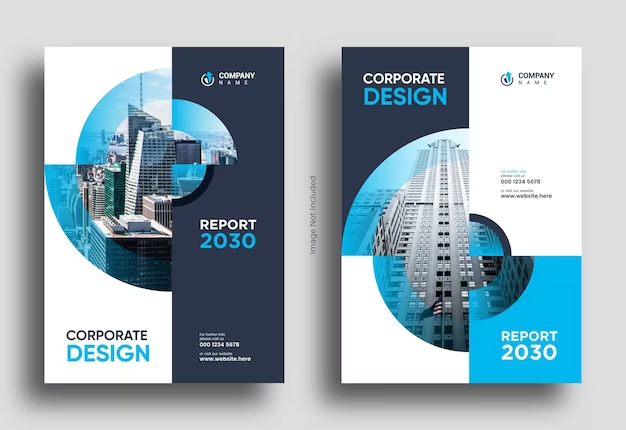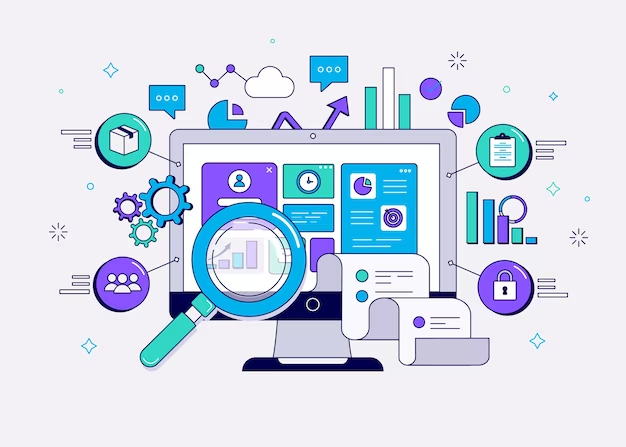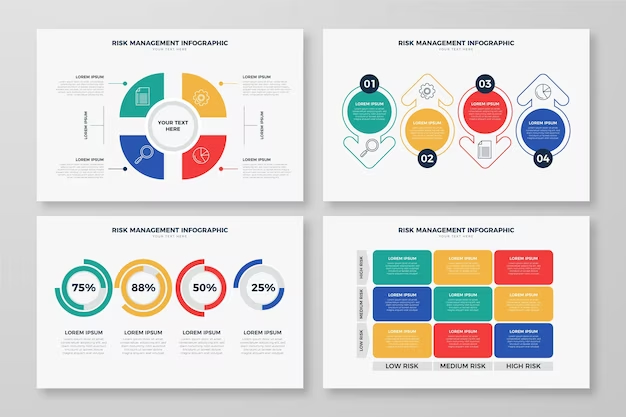A business infographic is a visual representation of data, information, or knowledge related to your business. Such as your products, services, processes, or results. A business infographic can help you communicate your message more effectively. It can help you attract and keep your audience’s attention. And increase your brand awareness and credibility.
But, creating a business infographic can be challenging and time-consuming. Especially if you are not a professional designer. Or you have no experience with graphic design tools.
That’s why we have prepared this guide for you, to help you create a stunning business infographic in 5 easy steps.
Step 1: Define Your Goal and Audience

Firstly, creating a business infographic is to define your goal and audience. You should have a clear and specific idea of what you want to achieve and how you will measure your success.
You should also know who your target audience is. Their needs, preferences, and expectations, and how you can provide solutions to them. By defining your audience, you can create a business infographic that is relevant to them.
Some examples of goals and audiences for a business infographic are:
- Showcase your product’s features and benefits, and persuade your potential customers to buy it.
- Explain your service’s process and results, and demonstrate your expertise and credibility to your clients.
- Highlight your company’s achievements and milestones, and increase your brand awareness and trustworthiness to your stakeholders.
- Compare your competitors’ strengths and weaknesses, and position yourself as a leader and innovator in your niche.
- Educate your employees or partners about your company’s vision, mission, and values, and motivate them to work together and achieve your goals.
Step 2: Choose Your Data and Information
Secondly, creating a business infographic is to choose your data and information. You should select the data and information that are relevant to your audience. And that can support your message and argument.
You should also make sure that your data and information are accurate and up-to-date. Also, ensure that you have the permission and source to use them. By choosing your data you can create a business infographic that is informative.
Some examples of data and information for a business infographic are:
- Statistics, such as numbers, percentages, ratios, and trends, that can show your performance, growth, or impact.
- Facts, such as dates, names, locations, and events, that can provide context, background, or evidence to your story.
- Quotes, such as testimonials, reviews, or feedback, that can express opinions, emotions, or experiences related to your topic.
- Tips, such as advice, recommendations, or best practices, that can offer guidance, solutions, or value to your audience.
- Questions, such as challenges, problems, or dilemmas, that can spark curiosity, interest, or engagement from your audience.
Step 3: Choose Your Format and Layout

Thirdly, creating a business infographic is to choose your format and layout. You should choose the format and layout that are suitable for your data and information. Make sure that can convey your message and argument in a logical manner.
You should also consider the size, shape, and orientation of your infographic. Keep in mind how it will fit and display on different devices and platforms. By choosing your format and layout, you can create a business infographic. An infographic that is coherent and attractive.
Some examples of formats and layouts for a business infographic are:
- Timeline, which can show the chronological order, sequence, or progression of your data and information.
- Process, which can show the steps, stages, or phases of your data and information.
- Comparison, which can show the similarities, differences, or contrasts of your data and information.
- List, which can show the categories, types, or examples of your data and information.
- Chart, which can show the quantity, proportion, or relationship of your data and information.
Step 4: Choose Your Design and Style
Fourthly, creating a business infographic is to choose your design and style. You should choose a design that is compatible with your brand identity and voice. Ensure that the design can reflect your personality and values.
You should also use design and style elements. Such as colors, fonts, icons, images, and shapes. These can enhance your data and information. Making them more appealing and memorable.
Some examples of design and style elements for a business infographic are:
- Colors. These can create contrast, harmony, or emphasis, and convey emotions, moods, or meanings.
- Fonts. Typography has the power to create hierarchy, balance, or alignment. It can convey personality, style, or tone.
- Icons. Tiny ones can represent, symbolize, or illustrate your data and information. Making them more visual and recognizable.
- Images. These can explain your data and information, and make them more engaging.
- Shapes. Unique shapes can create boundaries, spaces, or patterns, and convey direction, movement, or structure.
Step 5: Choose Your Tools and Resources

Lastly, creating a business infographic is to choose your tools and resources. You should choose the tools and resources that are easy and convenient to use. That can help you create and optimize your business infographic.
You should also use the tools and resources that are affordable and accessible. That can provide you with quality and variety. By choosing your resources, you can create a professional business infographic.
Some examples of tools and resources for creating an infographic are:
- Graphic design software, such as Adobe Illustrator, Photoshop, or InDesign. Such software can help you create and edit your business infographic. Providing you with advanced and customized features and options.
- Online infographic makers, such as Canva, Piktochart, or Visme, can help you create and share your business infographic, and provide you with ready-made and easy-to-use templates, elements, and formats.
- Data visualization tools, such as Google Charts, Tableau, or Infogram, can help you create and display your business infographic, and provide you with interactive and dynamic charts, graphs, and maps.
- Stock image websites, such as Unsplash, Pixabay, or Pexels, can help you find and use high-quality and royalty-free images for your business infographic.
- Icon websites, such as Flaticon, Iconfinder, or Noun Project, can help you find and use thousands of icons for your business infographic.
Wrapping up
A business infographic is a powerful and popular way to communicate your message, attract and retain your audience, and increase your brand awareness and credibility.
To create a stunning business infographic, you should follow the steps of defining your goal and audience, choosing your data and information, choosing your format and layout, choosing your design and style, choosing your tools and resources, and using various techniques and elements to enhance your content and presentation.
If you need professional help with your web designing needs, you can contact us for amazing, affordable, and super-effective web design services.
We are a team of experienced and qualified web designers and infographic creators who can help you create and optimize your business infographic for your audience and search engines. We offer affordable and customized web design services that can suit your needs and goals. Contact us today and get a free quote and consultation. We look forward to hearing from you.

